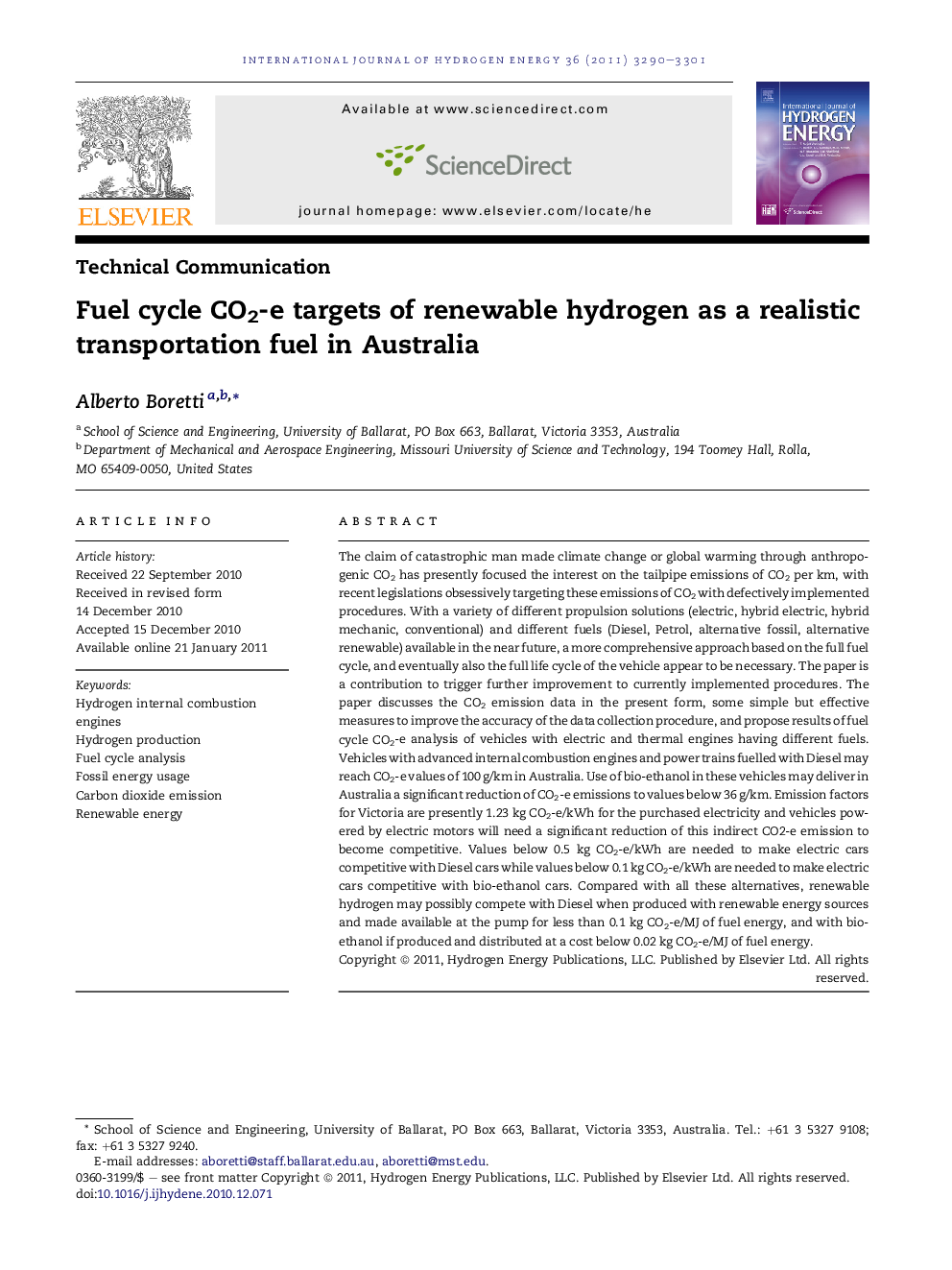| Article ID | Journal | Published Year | Pages | File Type |
|---|---|---|---|---|
| 1282612 | International Journal of Hydrogen Energy | 2011 | 12 Pages |
The claim of catastrophic man made climate change or global warming through anthropogenic CO2 has presently focused the interest on the tailpipe emissions of CO2 per km, with recent legislations obsessively targeting these emissions of CO2 with defectively implemented procedures. With a variety of different propulsion solutions (electric, hybrid electric, hybrid mechanic, conventional) and different fuels (Diesel, Petrol, alternative fossil, alternative renewable) available in the near future, a more comprehensive approach based on the full fuel cycle, and eventually also the full life cycle of the vehicle appear to be necessary. The paper is a contribution to trigger further improvement to currently implemented procedures. The paper discusses the CO2 emission data in the present form, some simple but effective measures to improve the accuracy of the data collection procedure, and propose results of fuel cycle CO2-e analysis of vehicles with electric and thermal engines having different fuels. Vehicles with advanced internal combustion engines and power trains fuelled with Diesel may reach CO2-e values of 100 g/km in Australia. Use of bio-ethanol in these vehicles may deliver in Australia a significant reduction of CO2-e emissions to values below 36 g/km. Emission factors for Victoria are presently 1.23 kg CO2-e/kWh for the purchased electricity and vehicles powered by electric motors will need a significant reduction of this indirect CO2-e emission to become competitive. Values below 0.5 kg CO2-e/kWh are needed to make electric cars competitive with Diesel cars while values below 0.1 kg CO2-e/kWh are needed to make electric cars competitive with bio-ethanol cars. Compared with all these alternatives, renewable hydrogen may possibly compete with Diesel when produced with renewable energy sources and made available at the pump for less than 0.1 kg CO2-e/MJ of fuel energy, and with bio-ethanol if produced and distributed at a cost below 0.02 kg CO2-e/MJ of fuel energy.
